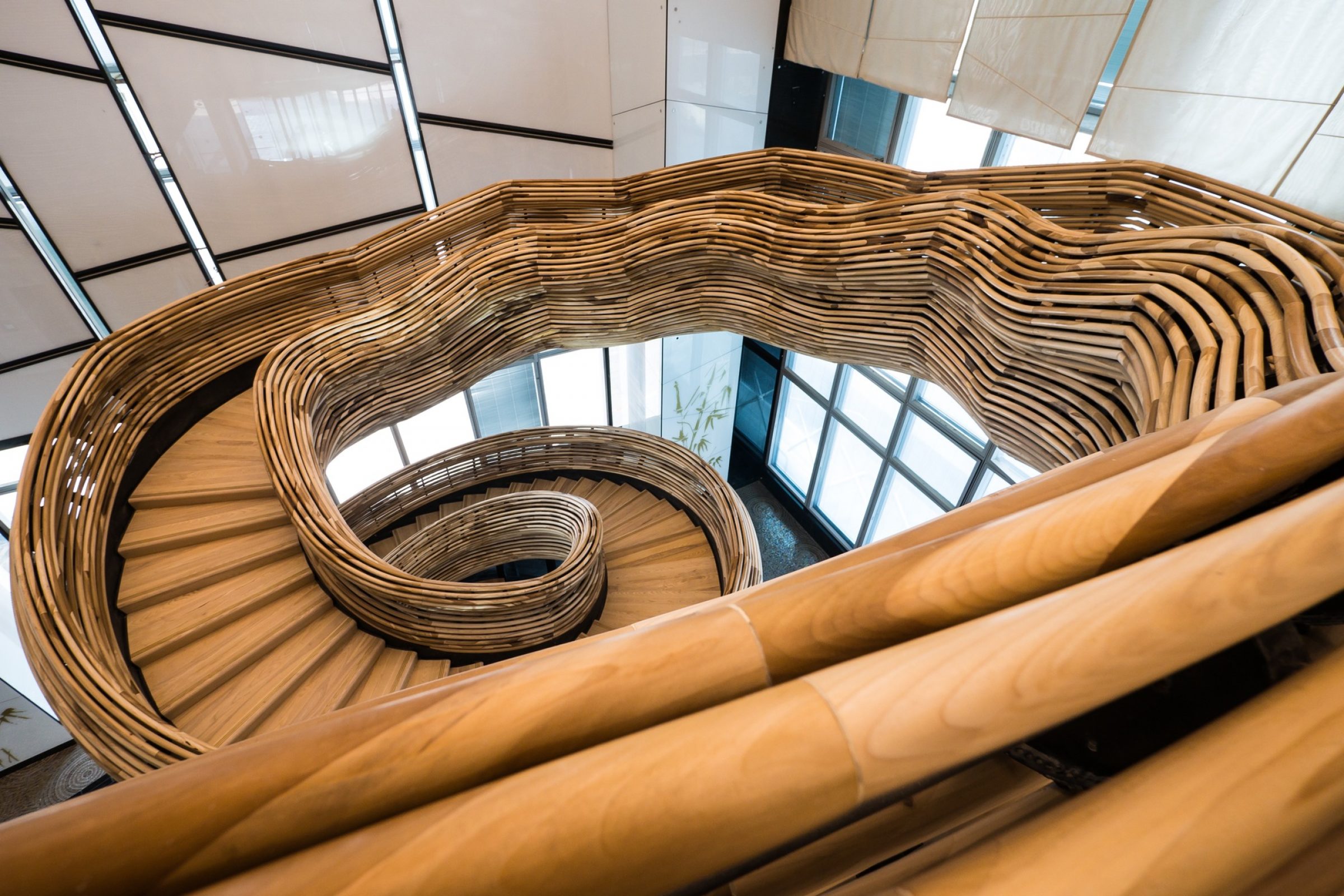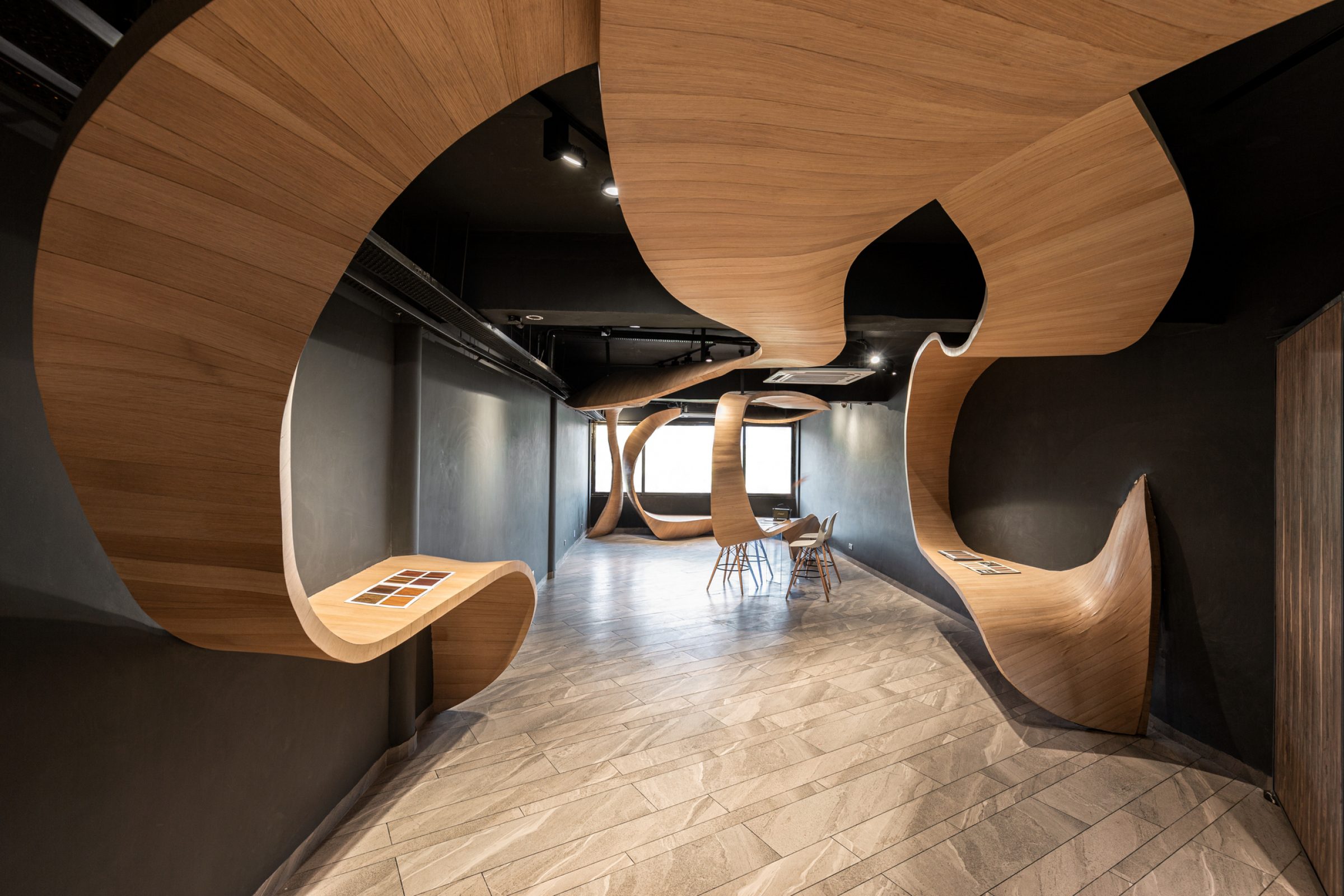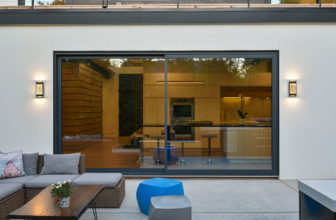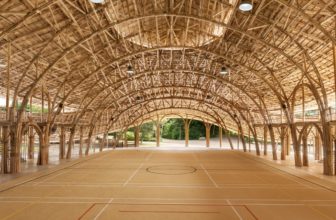The organic form of Bent Wood and its lively effect always adds to the aesthetics of construction projects. It can even be stronger and more profitable than regular wood. To bend wood, some skills, tools, and methods need to be taken into consideration. It is a complex process to bend a piece of wood enough to maintain its strength and hold the resulting shape forever without breaking it. Therefore, the physical characteristics of wood are the main factor in determining the proper method of wood bending. So you may need to check out the list of ” 65 Types of Wood Every Designer Needs to Know About ”, to know more about the different types of wood. And this article will cover the three basic methods for bending wood
3 Methods to bend wood:
1. Steam Bending
Steam Bending is the process of softening wood using steam heat, so it could be bent or flexed into new shapes. The science behind Steam Bending is the composites of wood plant cells. These plant cells comprise Cellulose Fibers and Lignin. Lignin is a natural thermoplastic, meaning it can change from solid to liquid when heated to its melting point. This softening of the Lignin gives space for the Cellulose Fibers to move, allowing the whole piece of wood to bend into a new form.
There are several advantages of Steam Bending that inspire carpenters and designers to choose this method to bend wood. The process is sustainable; it is cheap and does not require much or expensive equipment, it is clean and consumes very little energy, and basically, anyone can do it.
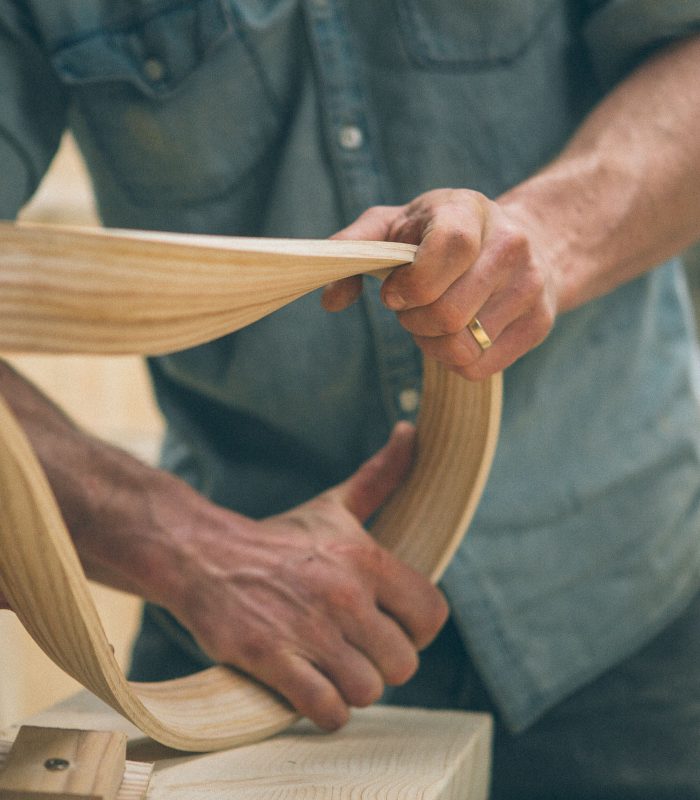
Courtesy of Tom Raffield
Almost any type of wood can be bent using this method, but it is preferable to use air-dried or fresh wood; a local and renewable material – adding to the sustainability of the process! Kiln-dried and processed wood can be used as well, however, fresh wood is easier and can be extremely bent.
Despite this variety, every type and even every piece of wood can react differently to Steam Bending. This unpredictability is particularly convenient for creatives of all fields and for experimental projects and prototypes. Here are Some buildings constructed with Steam Bending:
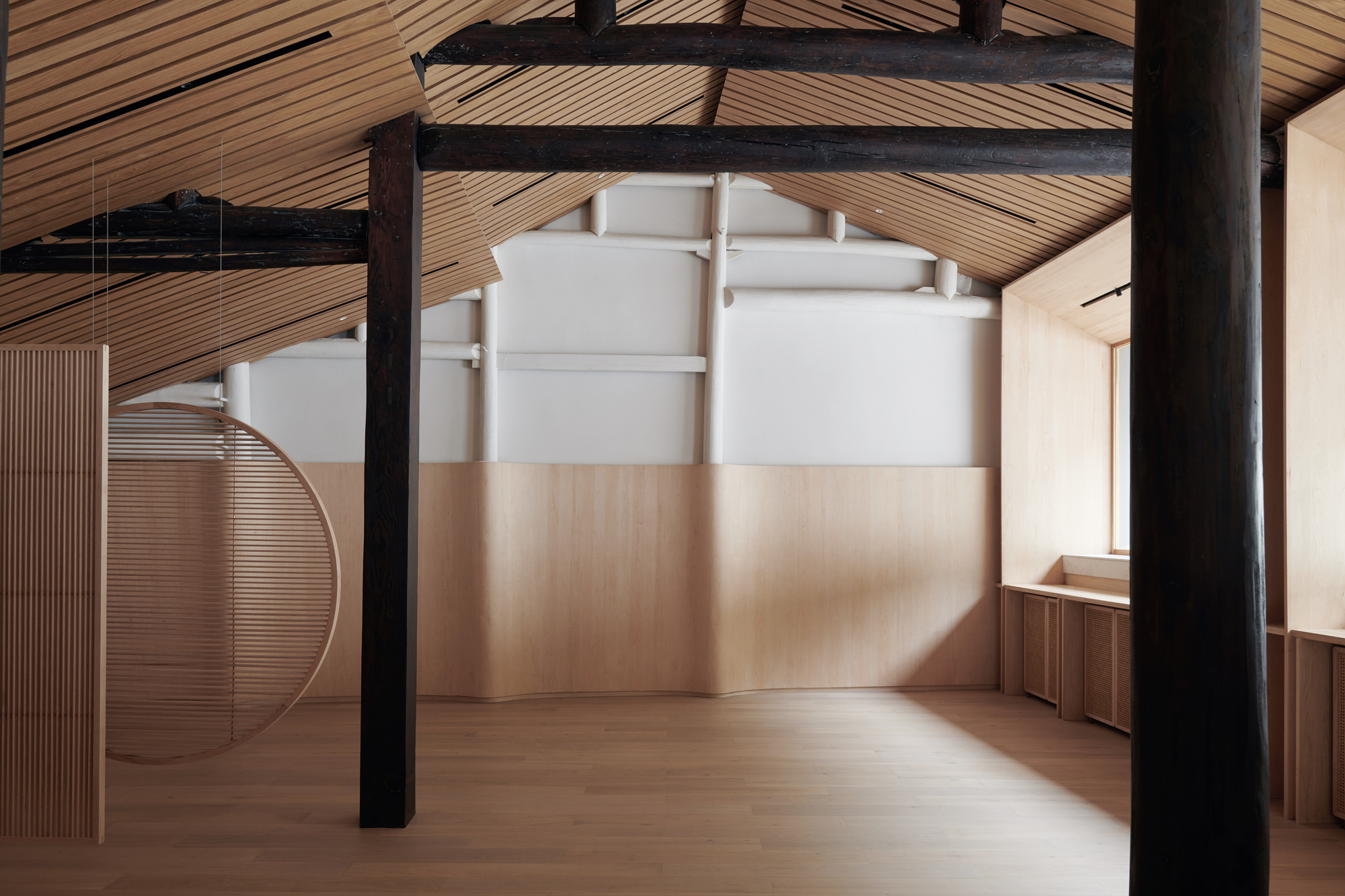
Random Art Space / AIR architects. Photography by © Hao Chen
The required steps to bend wood through steaming can be simplified into the following:
- Choose the right wood type – this includes species and the proper pieces of wood.
- Refine wood pieces, remove any irregularities, and shape the piece into a straight form.
- Make or use a tool that matches the wanted form of bentwood.
- Bend Wood!
2. Glued Laminated Wood
Glued Laminated Wood or Glulam is the composition of several wooden layers glued and laminated together. Because of its great strength and stability, it is typically used for structural elements. The combination of lamination and glue is a reliable method to bend wood – curving thinner layers is easier than thicker ones and supporting these layers with glue along the process adds up to its cohesion.
Glued Laminated Wood is proven to have high load capacity; however, it is a relatively lightweight material, meaning it is suitable for heavy structures and larger spans that require curved or arched shapes.
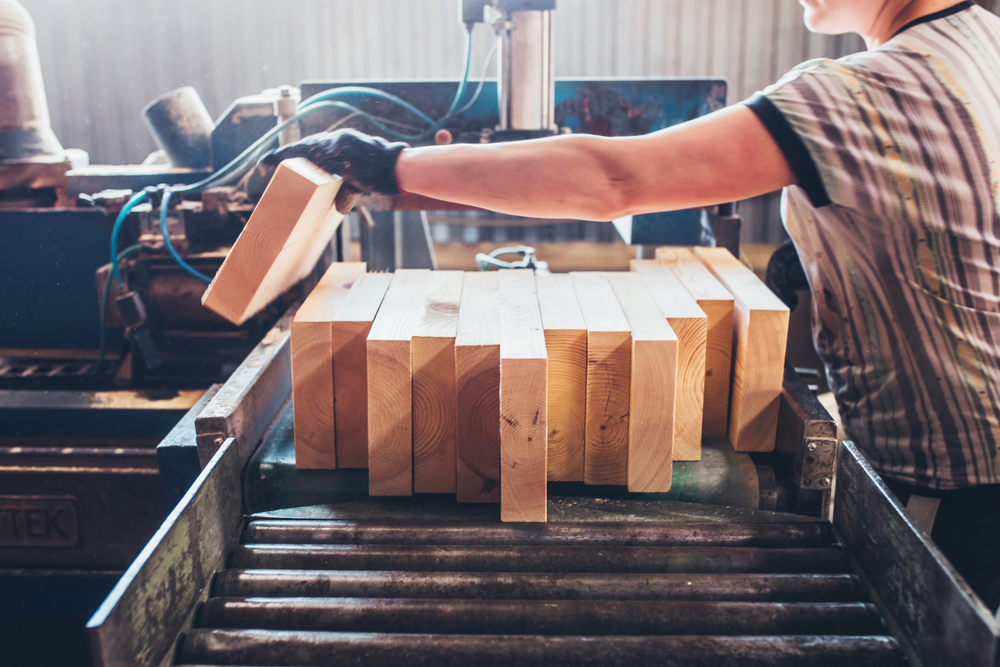
Via Shutterstock
Another reason bent lamination is used in space forming is its resistance to chemicals, moisture, and most importantly, fire. Glulam is also aesthetically interesting – the seamless connections and the monochromatic color scheme because the laminations are visually pleasing. Moreover, its flexibility in forming and dimensions gives the designer space for creativity and thinking out of the box.
A variety of wood types can be used to manufacture Glulam, preferably softwood.

image via Diffen
To bend Glued Laminated Wood, the following steps should be followed:
- Line the laminations so the fibers are parallel.
- Prepare a form that matches the desired shape of the wood.
- Bend wood and glue between the layers.
- Hold the resulting piece within the form with a clamp – you might need to bend a little more than the wanted form to account for the reaction of springing back after removing from the clamp.
Check out the outstanding roofing system made of bent Glued Laminated Wood for Wave House by Mareines Arquitetura.

Casa onda / Mareines Arquitetura + Patalano Arquitetura. Photography by © Leonardo Finotti
3. Kerf Bending
Kerf Bending has evolved from the most basic way to bend wood: manually bending the wood and attaching it to a solid form to hold its shape. While this is simple, it is not effective with thicker pieces of wood or for creating more dynamic and iterative forms. Kerf Bending is the process of carving several slots of specific dimensions in a piece of wood to allow it to bend flexibly.
The kerfs are typically on the inside of the wood, and there should be enough space for the kerfs to not close together, as this creates flat surfaces on the outside of the wood and does not give the desired smooth form.

Via the basic woodworking
Solid hardwoods are suitable for this method to bend wood. It is also important to choose pieces of wood where the grain runs in a fairly straight line – when there is a random grain pattern, the wood piece often breaks when bent.
Although Kerf Bending is typically used for smaller productions such as furniture or prototypes. However, Studio Ardete adopted this approach to bend wood in creating a ‘spatial matrix’ that solved a design problem in their SHOP NO. 851.
To bend wood using the Kerf Bending method, follow these steps:
- Create a form that matches the desired shape.
- Cut slots in the wood using a saw – each pattern of kerfs produces a different form.
- Attach the cut wood to the prepared form until it holds its shape.
Wood in all its forms is a renewable resource and. Using wood as a building element is a way to bring back vernacular architecture and the concept of building with nature. This supports the global vision of heading towards sustainable and environmentally conscious design. Further than that, bentwood satisfies the need for new and innovative architecture.
Bending wood is helping creatives to experiment with their work and create a new realm. Thus, it is important to study and understand the methods of working with wood and acknowledge its unlimited possibilities in the construction field with respect to its characteristics.


